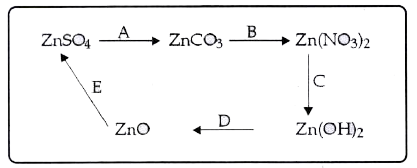Give a balanced chemical equation for the following conversion. Fe→FeCl3
To balance the chemical equation for the conversion of iron (Fe) to iron(III) chloride (FeCl₃), follow these steps:
Step 1: Write the unbalanced equation
The initial unbalanced equation for the reaction is:
Fe+Cl2→FeCl3
Step 2: Identify the number of atoms on each side
- On the left side (reactants), we have:
- 1 iron (Fe)
- 2 chlorine (Cl) from Cl₂
- On the right side (products), we have:
- 1 iron (Fe)
- 3 chlorine (Cl) from FeCl₃
Step 3: Balance the chlorine atoms
To balance the chlorine atoms, we need to have 3 chlorine atoms on the left side. Since chlorine gas (Cl₂) contains 2 chlorine atoms, we can use 3/2 (or 1.5) molecules of Cl₂ to get 3 chlorine atoms. However, it is more common to avoid fractions in chemical equations, so we will multiply the entire equation by 2.
Step 4: Write the balanced equation
After multiplying by 2, the equation becomes:
2Fe+3Cl2→2FeCl3
Step 5: Verify the balance
Now, let's check if the equation is balanced:
- Left side:
- 2 iron (Fe)
- 6 chlorine (Cl) (from 3 Cl₂)
- Right side:
- 2 iron (Fe)
- 6 chlorine (Cl) (from 2 FeCl₃)
Both sides have the same number of each type of atom, confirming that the equation is balanced.
Final Balanced Equation
The balanced chemical equation for the conversion of iron to iron(III) chloride is:
2Fe+3Cl2→2FeCl3
---
The initial unbalanced equation for the reaction is:
Fe+Cl2→FeCl3
- On the left side (reactants), we have:
- 1 iron (Fe)
- 2 chlorine (Cl) from Cl₂
- 1 iron (Fe)
- 3 chlorine (Cl) from FeCl₃
To balance the chlorine atoms, we need to have 3 chlorine atoms on the left side. Since chlorine gas (Cl₂) contains 2 chlorine atoms, we can use 3/2 (or 1.5) molecules of Cl₂ to get 3 chlorine atoms. However, it is more common to avoid fractions in chemical equations, so we will multiply the entire equation by 2.
After multiplying by 2, the equation becomes:
2Fe+3Cl2→2FeCl3
Now, let's check if the equation is balanced:
- Left side:
- 2 iron (Fe)
- 6 chlorine (Cl) (from 3 Cl₂)
- 2 iron (Fe)
- 6 chlorine (Cl) (from 2 FeCl₃)
The balanced chemical equation for the conversion of iron to iron(III) chloride is:
2Fe+3Cl2→2FeCl3
Topper's Solved these Questions
- ACIDS, BASES AND SALTSBOOK - ICSECHAPTER - ACIDS, BASES AND SALTSEXERCISE - Questions (Fill in the blanks)
3 Videos
- ACIDS, BASES AND SALTSBOOK - ICSECHAPTER - ACIDS, BASES AND SALTSEXERCISE - Questions (Select the correct answer)
2 Videos
- MOLE CONCEPT & STOICHIOMETRY (PART-A GAY LUSSAC'S LAW - AVOGADRO'S LAW-MOLE CONCEPT)BOOK - ICSECHAPTER - MOLE CONCEPT & STOICHIOMETRY (PART-A GAY LUSSAC'S LAW - AVOGADRO'S LAW-MOLE CONCEPT)EXERCISE - Additional Problems (Vapour Density & Molecular Weight)
6 Videos
- ANALYTICAL CHEMISTRYBOOK - ICSECHAPTER - ANALYTICAL CHEMISTRYEXERCISE - Figure Based Questions
2 Videos
Similar Questions
Give balanced chemical equations for the following conversions:
FeA−−→FeCl3B−−→FeCO3C−−→Fe(NO3)2
View SolutionGive balanced chemical equations for the following conversions A, B and C :
FeA−−→FeCl3B−−→FeCO3C−−→Fe(NO3)2
View SolutionIdentify the acid which matches the following description :
Give balanced chemical equations for the following conversions A, B and C :
FeA−−→FeCl3B−−→FeCO3C−−→Fe(NO3)2
View SolutionGive balanced equations for the following conversions -A,B,C,D&E.

View SolutionGive balanced chemical equations for the following conversions :
(i) Ethanoic acid to ethyl ethanoate.
(ii) Calcium carbide to ethyne.
(iii) Sodium ethanoate to methane.
View SolutionGive the equations for the following conversions A to E

View SolutionGive the equations for the following conversions A to E.

View SolutionGive balanced chemical equation for carbylamine reaction.
View SolutionGive balanced equations for the following conversions.
An alkyne to an alkene.
View SolutionGive balanced equations for the following conversions.
An alkene to an alkane.
View Solution
